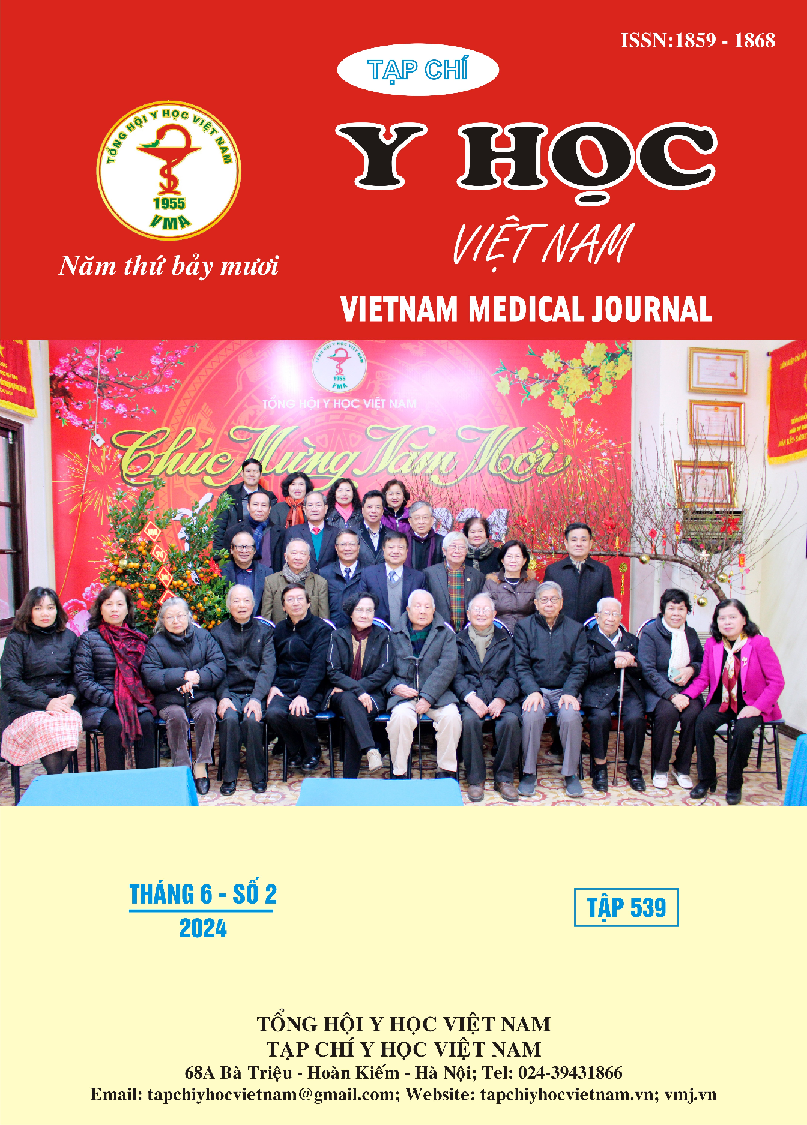IMPACT OF NORMAL AORTIC ARCH MORPHOLOGIES ON ACUTE TYPE A AORTIC DISSECTION SURGERY
Main Article Content
Abstract
Objectives: The relationship between anatomical characteristics of the aortic arch and the risk of type A aortic dissection and surgery for this disease remained unclear. This study evaluated the effects of the types of normal aortic arch on acute type A aortic dissection surgery. Methods and results: We retrospectively reviewed all patients with acute type A aortic dissection who underwent surgery at Viet Duc University Hospital from January 2021 to December 2022. Of total 89 patients, 5 patients had abnormal aortic arch anatomy. Among the group with normal aortic arch, type I group had the highest rate (57.1%), 3 times higher than type II (19.0%) and over 2 times higher than type III (23.8%). Type II arch group had a significantly higher history of hypertension, while patients with type III arch were more likely to have visceral vessel injuries than the other two groups. Postoperatively, the early mortality rate and early reoperation rate were 11.2% and 5.6%, respectively. The most common cause of postoperative early death was multiorgan failure and this of reoperation was bleeding. The types of the normal aortic arch showed no significant influence on surgical characteristics and early outcomes after surgery for acute type A aortic dissection. Conclusions: The anatomical morphology of the normal aortic arch may be a risk factor for acute type A aortic dissection and the predictor in surgery for this disease, especially type III arch configuration, however, more systematic and in-depth studies are required to clarify this issue.
Article Details
Keywords
Aortic dissection, anatomy, aortic arch, surgery
References
2. Arturo Evangelista, Eric M Isselbacher, et al. Insights From the International Registry of Acute Aortic Dissection: A 20-Year Experience of Collaborative Clinical Research. Circulation. 2018 Apr 24;137(17): 1846-1860. doi: 10.1161/ CIRCULATIONAHA.117.031264.
3. Massimiliano M Marrocco-Trischitta, et al. Prevalence of type III arch configuration in patients with type B aortic dissection. Eur J Cardiothorac Surg. 2019 Dec 1;56(6): 1075-1080. doi: 10.1093/ejcts/ezz137.
4. Alper Karacan, et al. Anatomical variations of aortic arch branching: evaluation with computed tomographic angiography. Cardiol Young. 2014 Jun;24(3):485-93. doi:10.1017/ S1047951113000656. Epub 2013 May 22.
5. Songhe Shen, Xiongjing Jiang, et al. Effect of aortic arch type on technical indicators in patients undergoing carotid artery stenting. J Int Med Res. 2019 Feb;47(2): 682-688. doi: 10.1177/ 0300060518807604. Epub 2018 Oct 31.
6. Daniella Eliathamby, Mariana Gutierrez, et al. Ascending Aortic Length and Its Association With Type A Aortic Dissection. J Am Heart Assoc. 2021 Jul 6;10(13):e020140. doi: 10.1161/ JAHA.120.020140. Epub 2021 Jun 14.
7. Tobias Krüger, Alexandre Oikonomou, et al. Aortic elongation and the risk for dissection: the Tübingen Aortic Pathoanatomy (TAIPAN) project†. Eur J Cardiothorac Surg. 2017 Jun 1;51(6):1119-1126. doi: 10.1093/ejcts/ezx005.
8. Faggioli GL, Ferri M, Freie A, et al. Aortic arch anomalies are associated with increased risk of neurological events in carotid stent procedures. Eur J Vasc Endovasc Surg 2007; 33: 436–441. [PubMed] [Google Scholar]


